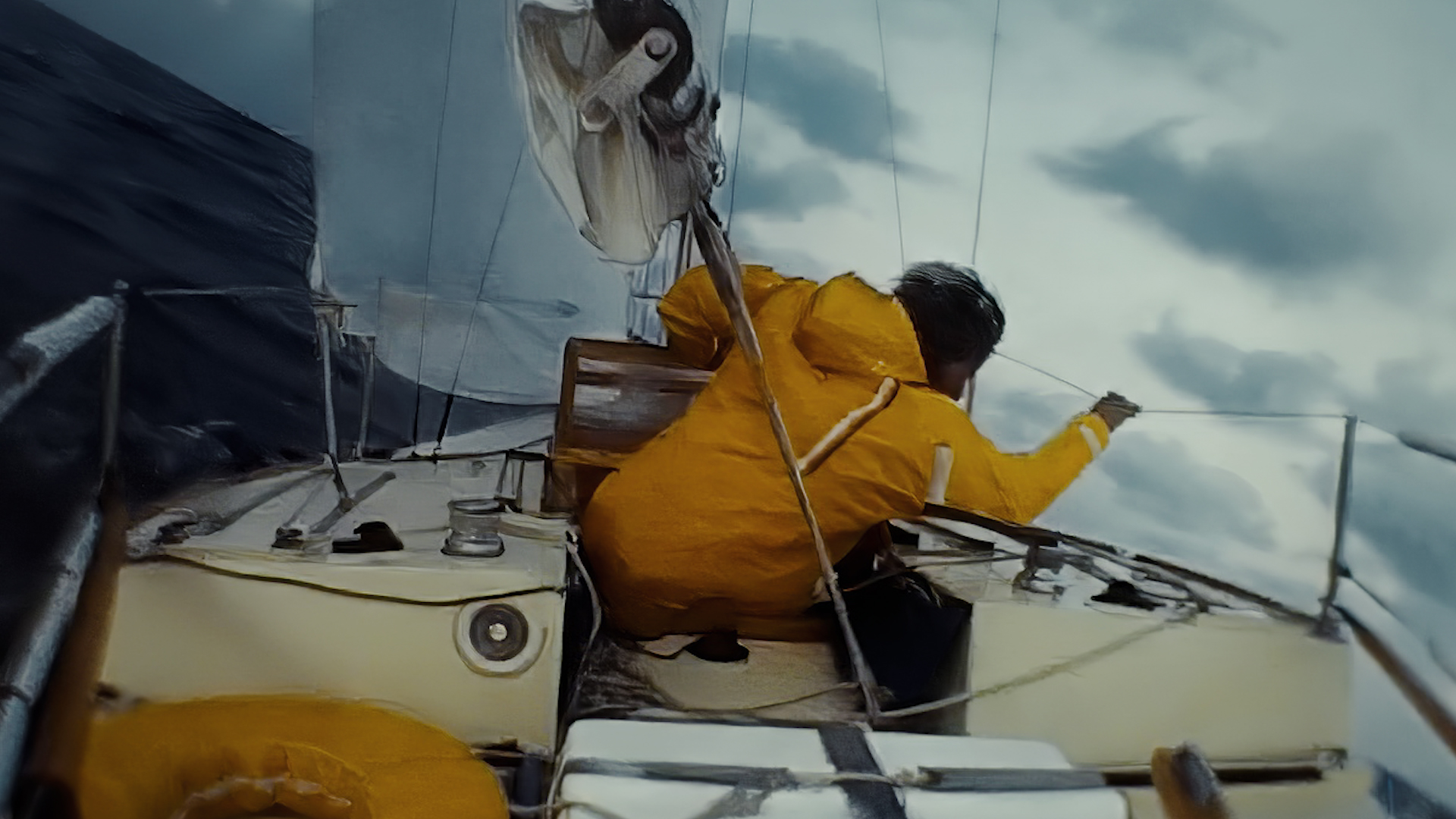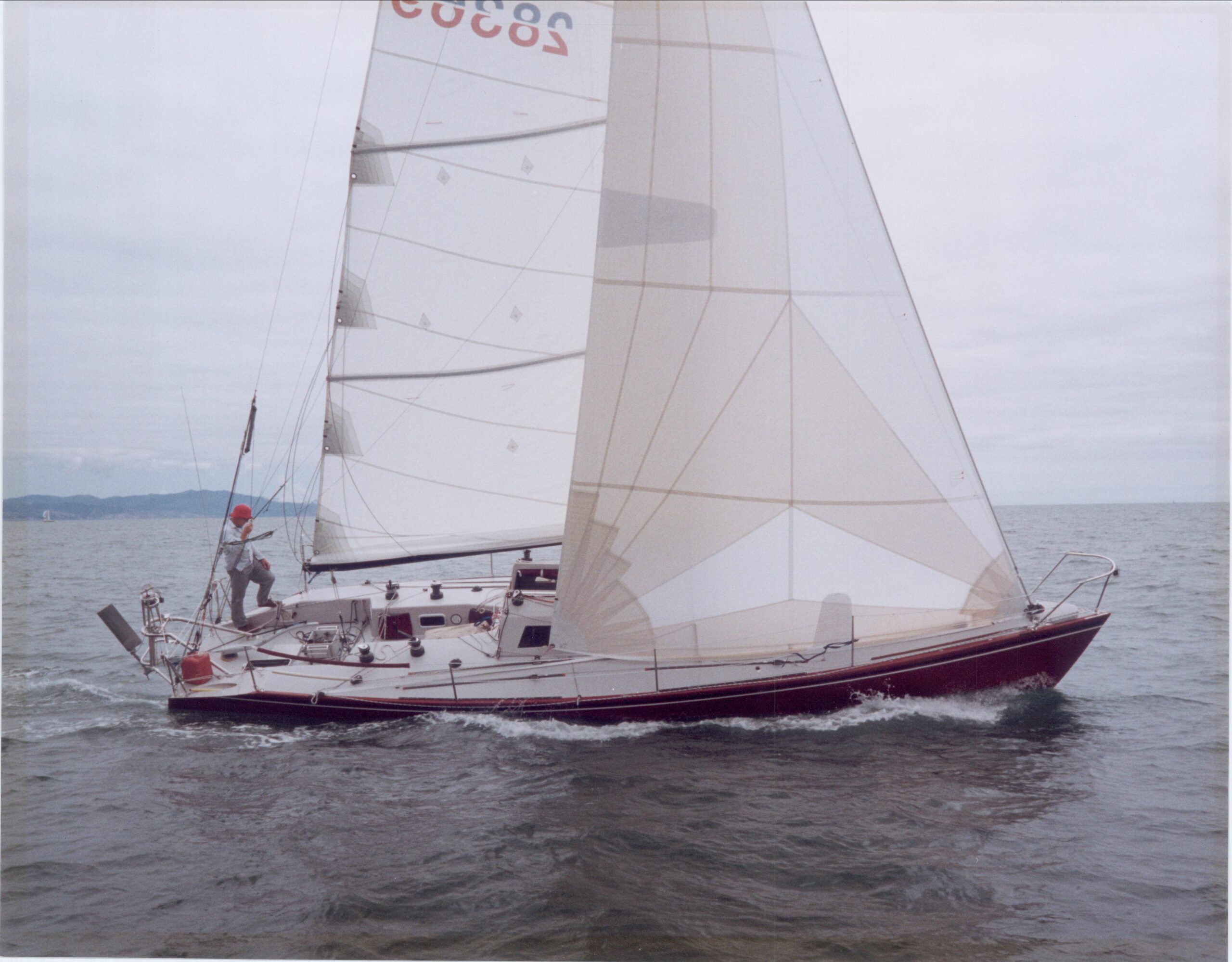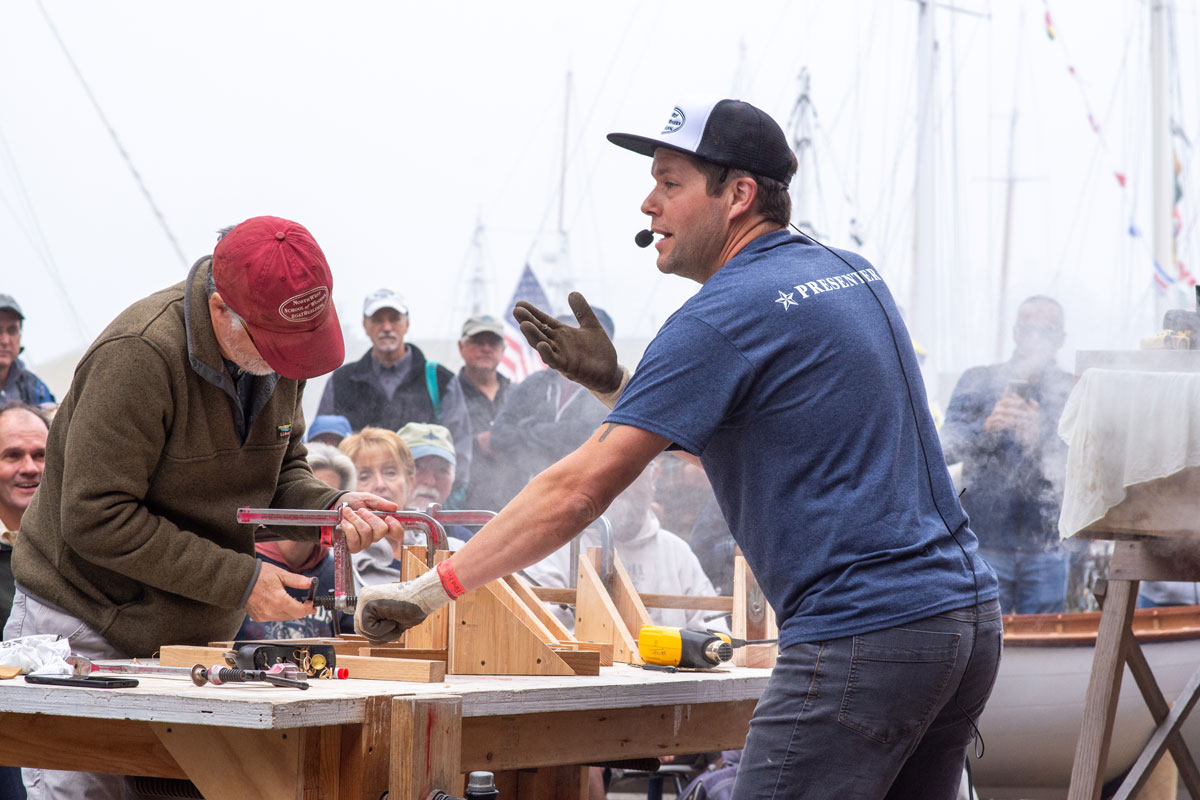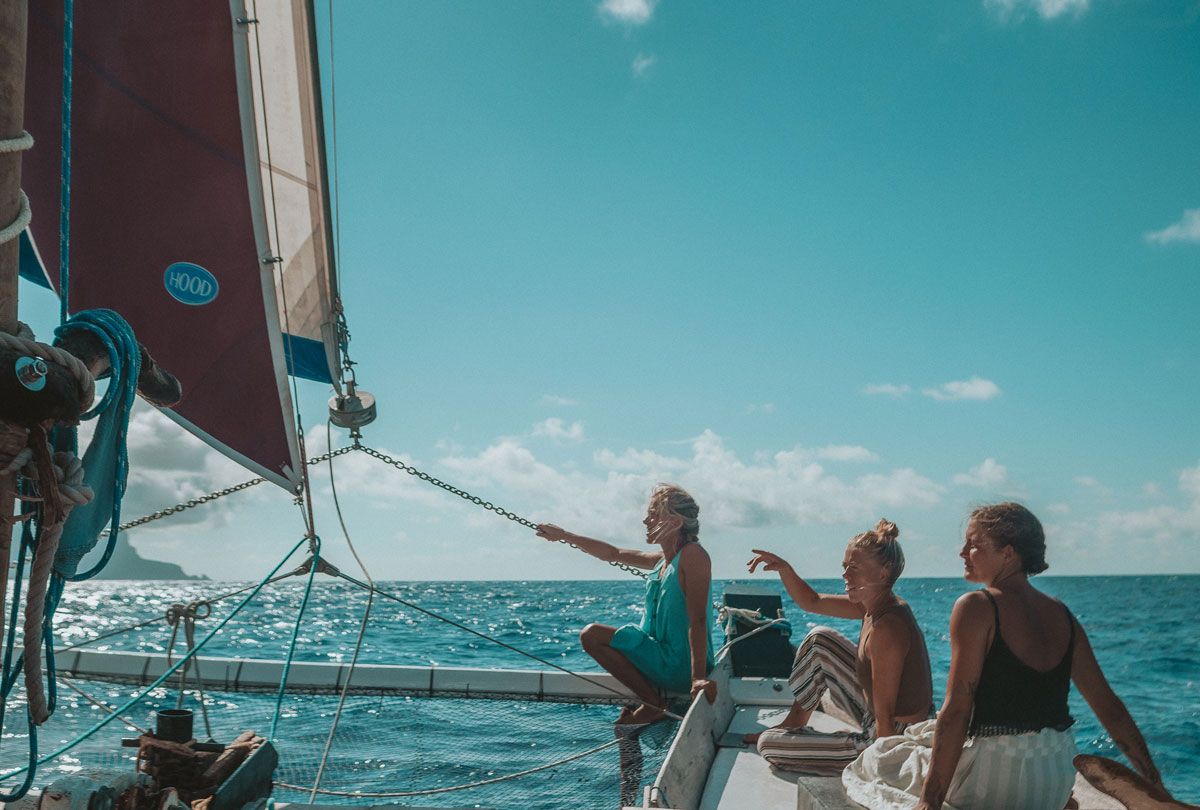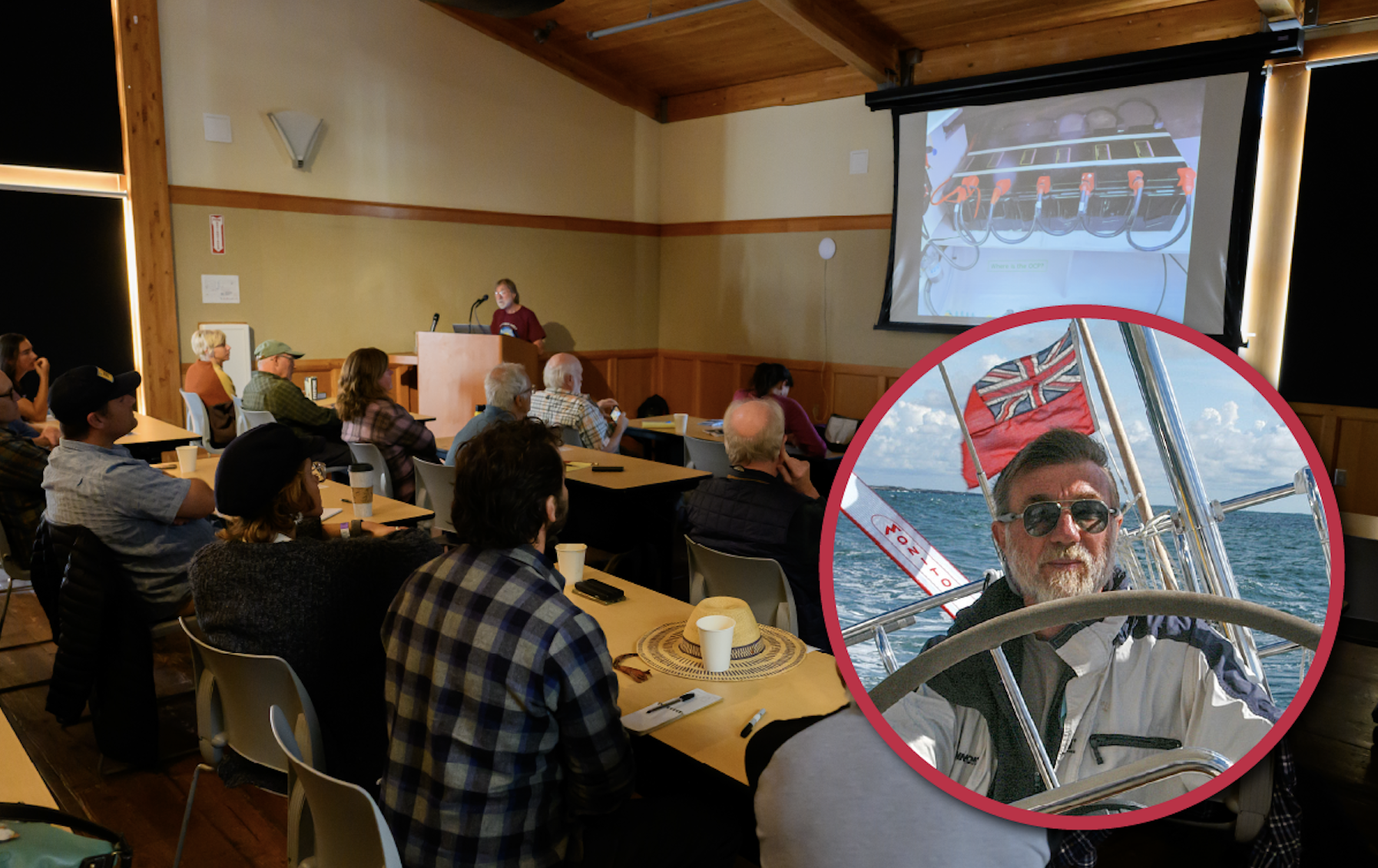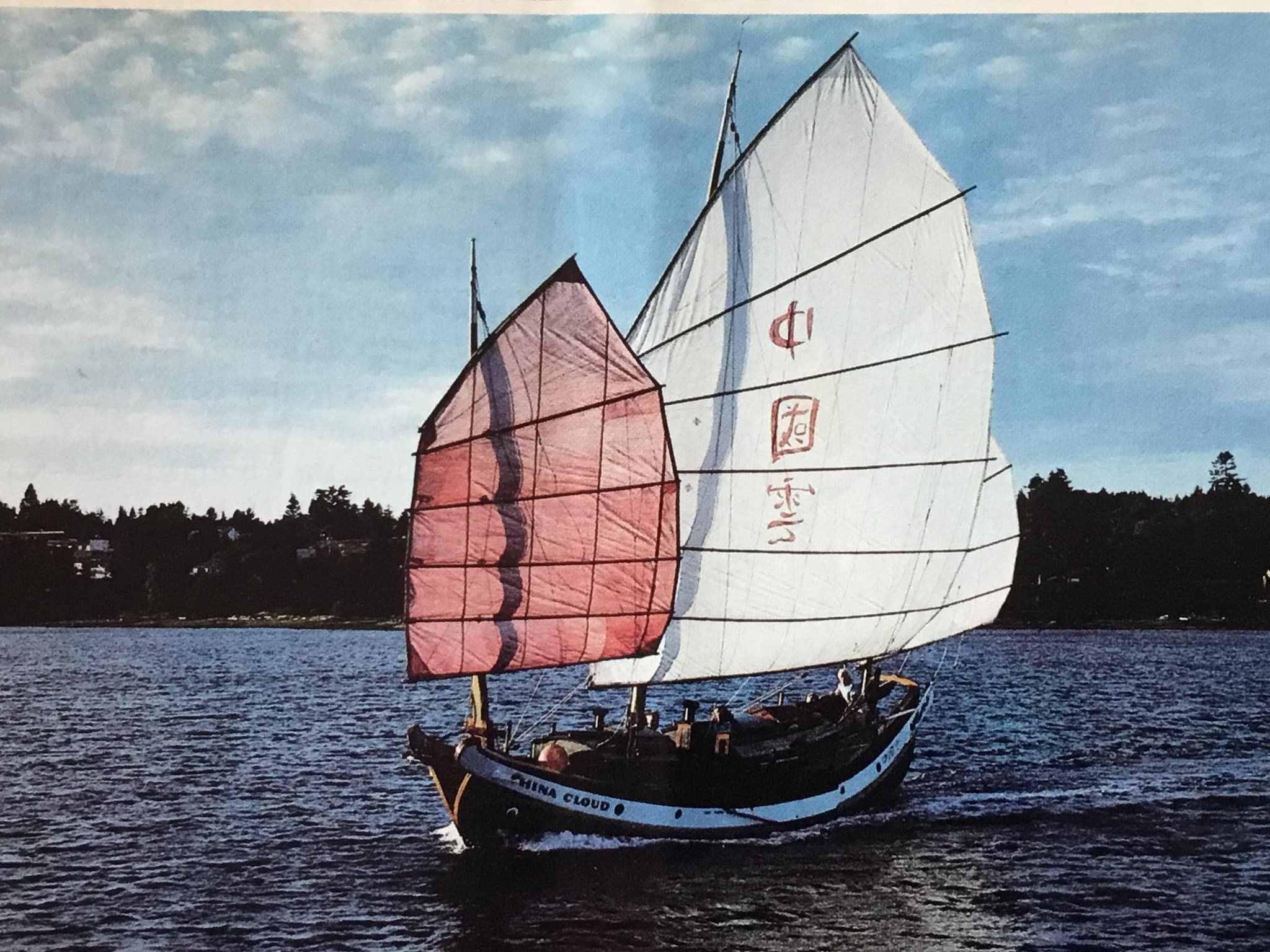
By Dan Rubin
Sometime in the mid-1970s, Allen and Sharie Farrell, renowned for their hand-built sailing vessels and offshore adventuring, were living in a little cedar shake floathouse in False Bay on Lasqueti Island, when Allen began sketching plans for a vessel unlike any they had ever built.
They had already managed to obtain their beautiful boat, Native Girl, back after reluctantly selling her. Living inland on the island, they missed the water so much that they moved back to the shore to live beside the sea. The floathouse was tiny, another example of the Farrells’ way of living lightly on land or sea. It provided everything they needed. Living there, even before Native Girl had been returned to them, Allen was still in boatbuilding mode. In a shed beside the floathouse, on the rocky shore, he was creating yet another masterpiece: a 35-foot plywood dory that he would call August Moon.
It was after August Moon, and after the return of Native Girl, that their final dream boat took shape. Allen, after building a series of traditional vessels with western fore-and-aft rig, had turned his attention to the east, conceiving a vessel suitable as a liveaboard home for a couple now well into their seventies. The result was China Cloud.
Built on the beach at Scottie Bay, near the northwest corner of Lasqueti, she took shape little by little, under an orange tarp. Using wood milled for him by Bill McLean on Bull Island, Allen carved out the keelson and began erecting frames. The basic notion behind his design was a commodious, broad-beamed hull, shallow draft and equipped with bilge keels, that would draw only about two feet, allowing it to slide into the shallowest cove and remain upright when the tide went out.
The sails, rudder, and simplified version of control lines that Allen evolved would all balance and pivot easily, making the handling of the boat gentle and manageable for older hands and muscles. Not that Allen was anything but fit: he could walk on his hands until he was 78, then climb the mast and slide down to the deck, holding onto the standing rigging, finally turning and flipping down to the deck in his bare feet. But Sharie was feeling her age and was less steady on her feet.
The new vessel took shape over the next two years. When Allen needed wood for the top rails, after the hull was complete, he went beachcombing and found the perfectly curved length of wood on the beach, that allowed him to complete the bulwarks on one side. The other had to be pieced. Allen hand-carved blocks suitable for a 52-foot vessel, including one enormous hauling block for the anchor line. The three junk sails balanced perfectly, with the traditional forward sweeping mast to hold what passes for a jib. All three sails could be lifted into place without using block and tackle, while the rudder could be lowered when the boat was not sitting on the beach.
In its later form, the two leeboards designed to hang down on either side when sailing across the wind had been discarded after Allen was able to get a feel for the boat and realized that without them there was less drag, so you would sail farther, but also faster, on each tack. He also simplified the complicated pattern of tiny lines running to each batten for control of the sails, so he needed only one sheet for each sail. The sheer was more extreme than on the earlier vessels the Farrells had built, but perfectly in keeping with lines that remind the onlooker of a bird or graceful fish. One friend, upon seeing the white curve of the topsides reflected in the calm waters of Nanaimo Harbour, said “It’s a smile, a smile on the sea!”
After the drama of its launch, the Farrells lived aboard in their seventies and well into their eighties on a 52-foot sailing vessel with no engine, no refrigeration, no electronic navigation, and no washing machine. And as they cruised, they changed lives.
Imagine you are some weekend sailor from Seattle, who has just (very proudly) made it through Dodd Narrows and has dropped the hook off Newcastle Island, in Nanaimo. You are just settling back for happy hour in the cockpit of your little plastic cruiser, waiting for your partner to pass you the ceremonial bottle of arrival, when around the corner comes China Cloud. Drink in hand, mouth open, you watch this fairytale vessel cruise gently into the anchorage, just avoiding other boats, until a woman in a Madras skirt gracefully runs forward to drop the hook. At the same time, a man with a mane of white hair and arms still strong and capable turns the vessel. And then with a whoosh, but gently, the sails come down.
You are left, mouth open, still holding your drink. So, in the morning, after telling your partner you will, um, row over to buy some more bread, you head straight for China Cloud. And as you are rowing around her, admiring the gilded mermaid at her stern, and the name on the bow, the man with the mane of hair appears and invites you onboard, and you find yourself sitting in a cabin warmed by a little wood stove, eating home baked bread, sipping tea and examining Allen’s many paintings of life on the coast over past decades. And something in you shifts. And you will never be the same again.
That story was repeated so many times that it can truly be said that China Cloud left behind a string of personal epiphanies. The example that she and the Farrells set, of a life lived fully in harmony with the world, floating lightly like a smile on the sea, is still reverberating through our maritime community. But what of China Cloud now that Allen and Sharie are both gone?
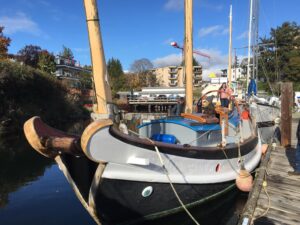
She still lives, in the hands of Eden Murray and her father Hans, closely related to the Farrells. At a little dock on the shores of Esquimalt, British Columbia, she is being restored and lovingly maintained. Her 66 wooden drawers will hold medicinal herbs and become a place of healing practice and devotion to the gifts of nature. She will still be sailing for many years to come, reminding us, along with our memories and stories of the vessels built and offshore voyages completed during the Farrells’ 50 years together, that the dream is real, possible, and attainable, if we only remember to keep things balanced and simple. That way, there will always be a smile on the sea.
Come see China Cloud at this year’s Wooden Boat Festival!
Interested in hearing more about China Cloud and the Farrells?
Come to the Cruising Stage on Sunday at Festival for presentations by Dan Rubin and China Cloud’s current owner, Eden Murray.
Photos from Eden Murray and the collection of Allen and Sharie Farrell
Search Highlights
Recent Highlights
